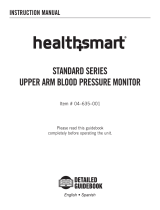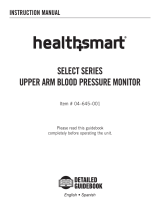
3
IMPORTANT PRODUCT NOTICES AND SAFETY
INSTRUCTIONS
When using your blood pressure monitor, basic pre-
cautions should always be followed. Please read and
follow all instructions and warnings before using this
product. Save these instructions for future reference.
• Please note that this is a home healthcare product
only and it is not intended to serve as a substitute
for the advice of a physician or medical professional.
• Do not use this device for diagnosis or treatment of any
health problem or disease. Measurement results are for
reference only. Consult a healthcare professional for
interpretation of pressure measurements. Contact your
physician if you have or suspect any medical problem.
Do not change your medications without the advice of
your physician or healthcare professional.
• Proper cuff size is critical for accurate measurements. If
the arrow on the cuff falls outside of the solid color line
when applied to the user’s arm, contact HoMedics
Consumer Relations regarding additional cuff sizes.
• This product is not suitable for people with arrythmias.
This device may have difficulty determining the proper
blood pressure for individuals with diabetes, poor
circulation of blood, kidney problems or for users
who have suffered from a stroke.



























